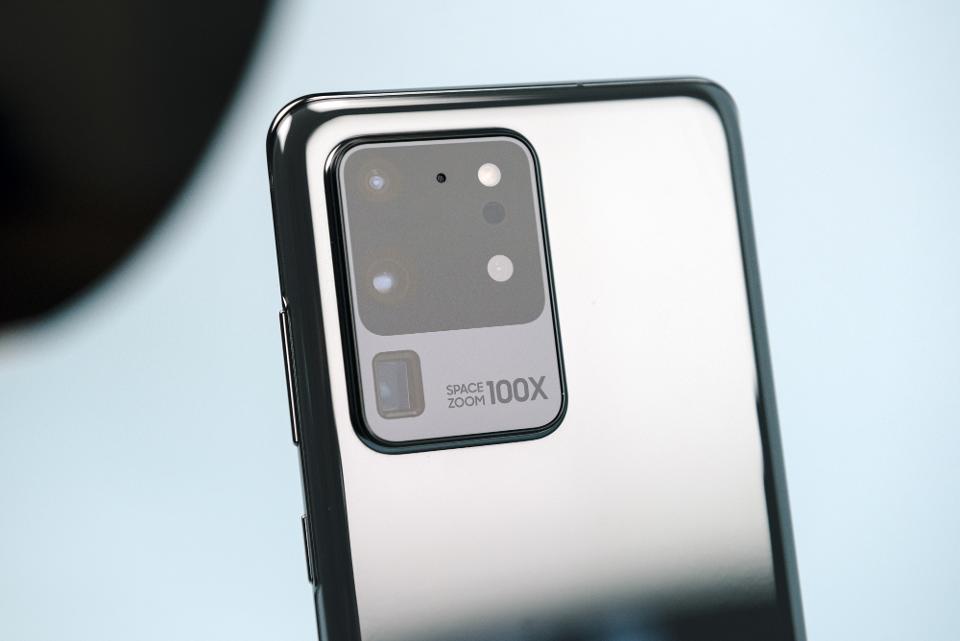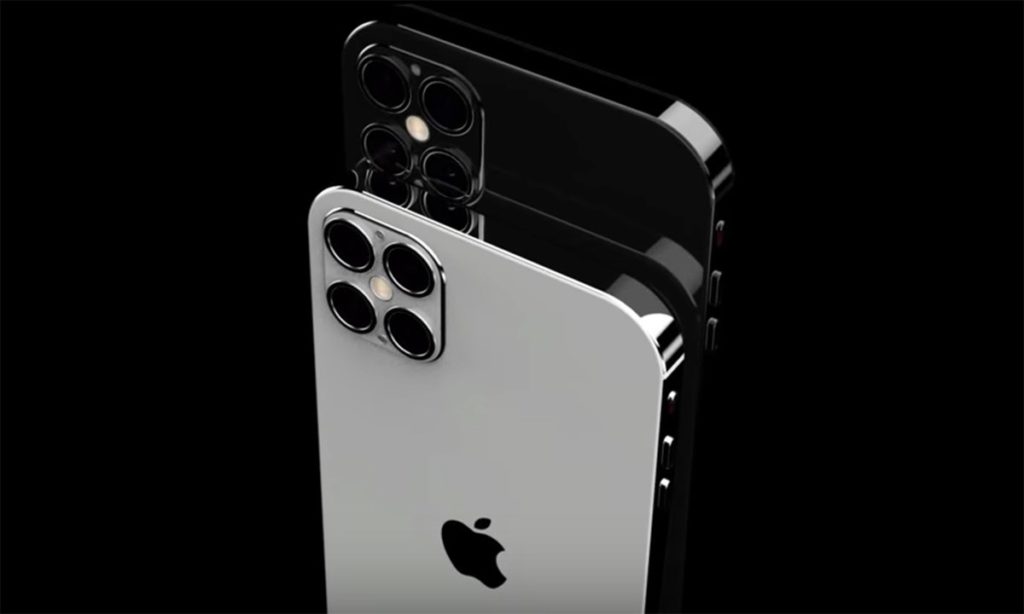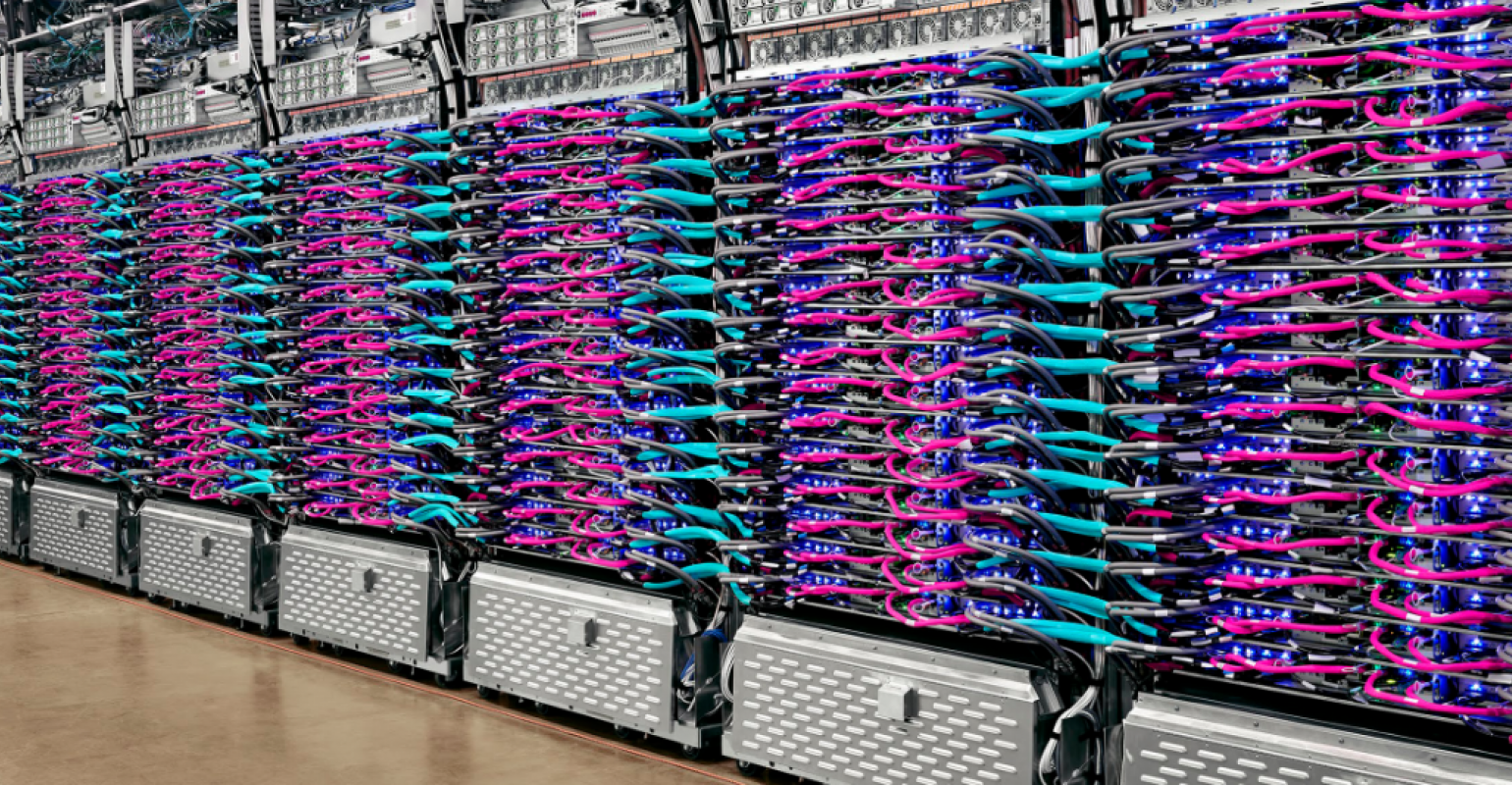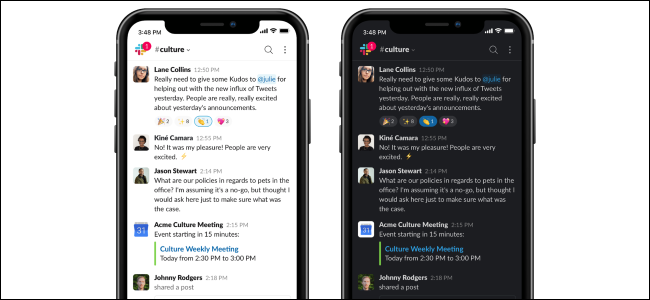
Between Samsung’s Galaxy S20 Ultra And Apple’s iPhone 12
Samsung and Apple companies are fond of playing this game – of making sure their rival cannot claim to have something each of them don’t. But in 2020, with this S20 and iPhone 12 lineup, it feels like the Galaxy-maker and the iPhone 12 maker has gone the extra mile to compete with each other.
Picking through the dross and gimmicks, there are some genuinely useful new abilities the S20 boasts, which may help buyers decide whether to pick up one of the new Galaxy phones or stump for Apple’s latest iPhone 11 Pro Max. Here’s my breakdown.
Samsung Galaxy S20 Ultra
A serious promotional deal
There’s no budget-friendly S20e device this year – so it’s bad news for the deal-hunters. What the Korean company did do, though, was drop the price of the entire S10 range by $150 (which presumably makes more sense than creating and shipping another budget phone, especially so soon after the S10 Lite launched).
It also announced a free pair of Galaxy Buds+ with the Galaxy S20 Ulta, which are worth $149. Bundling next generation headphones with a top-range phone is a clear statement of intent that’s aimed at potential iPhone/AirPod buyers. I’m yet to test out Samsung’s new headphones, but the improved speakers, increased number of microphones and 11 hour battery life looks promising.
These aren’t a pair of cheap earbuds that you throw in with a device, they’re Samsung’s premiere – high-end – ear bud competitor to Apple’s AirPods. So a free pair is a good deal.
There’s also an impressive Galaxy Bud x Spotify collaboration feature which lets users automatically play a playlist based on their music tastes with a single long press on the ear bud. That, alongside generating Spotify links to share directly in the Samsung keyboard, shows how collaboration, automation and promotional deals can come together perfectly.
Lasting power
The iPhone 11 Pro Max’s battery comes in at 3969 mAh, whereas Samsung’s S20 Ultra has a huge 5000mAh power pack. Battery size doesn’t determine how long a smartphone lasts – other factors like software and screen size come into it – but at 5000Mah you can be confident of the S20 Ultra’s battery life. Few flagship devices cross over into 5000mAh territory, so hats off to Samsung for pushing the envelope.
Useful automation
The headline specifications in all areas of the S20 are impressive but particularly so in the camera department. Whilst we’ll have to wait to test the device’s photography skills properly, some small details caught my eye. Specifically, the “Single Take” mode which takes a number of different videos and pictures with one press (portrait, gifs, wide angle etc) and lets users choose which they want to use.
It’s this kind of automation that’s genuinely useful in phones like the S20, which are often plagued by feature overkill. If you’re a casual user – even if you’re a power user – the sheer amount of features is overwhelming, which means only a handful are ever used. In real-world usage people only interact with a limited amount of features and apps – particularly after the excitement of a new phone cools.
But making (almost) all of the new camera features available in a single click is a clever move. It takes the hassle out of deciding what camera mode to use and guarantees all modes are accessible. What’s the point of all of that research and development if no one uses – or is even aware – of the best features?
Bluetooth sharing
Another feature that was briefly mentioned was “Music Sharing”, which essentially lets users share their bluetooth connection to a speaker or car with another phone – so both devices can play music and content.
Bluetooth pairing isn’t a particularly arduous process, but it does take a bit of time and some fiddling. Music Share takes that away with (hopefully) fewer taps and less fiddling. Again, this is the type of every-day feature that excites me more than the big headline specifications.
Simplifying a common action and solving an (albeit minor) issue will, in the long run, prove to be more useful and impressive than perhaps a 120Hz display. Apple and Google (the latter in particular with its Assistant AI) are better at these types of low-level solutions, so I’m glad to see Samsung joining in.
Finally, a proper AirDrop challenger
Samsung’s new Quick Share feature looks like the Android version of Apple’s AirDrop we’ve been waiting for. In essence, it will allow Galaxy S20 users to quickly share content between each other when nearby. The improvement on Apple’s version is that users can share with up to five people at once. The downside is that only S20 users can share between each other (for now).
But…
The $1399 price tag for the Ultra is not a joke. Incredibly, you can pick up an iPhone 11 Pro Max for $300 less – admittedly with much less storage. But we now live in a world where Samsung’s most expensive phone costs more than Apple’s most expensive phone – what a time to be alive.
The reason for that will be the additional cost 5G adds to the price tag (Apple’s iPhone 11 isn’t 5G ready) – but still, it’s a lot of money. The high cost might explain why the S20 Ultra has so many features – Samsung may see it as a fair trade off. We’ll know more if that trade off is worth your money when I fully review the S20 Ultra.
Apple iPhone 12

Apple’s iPhone 12 is already subject to leak after leak after leak. As such, this article will roundup everything we know so far. There’s a lot to love and some disappointments as well. But, overall, Apple is heading for its most exciting iPhone upgrade in years. Here are the reasons why.
Camera – the headline news for the iPhone 12 is Apple’s move to integrate a long-range 3D camera. This has now been leaked by multiple sources and it will enable the iPhone 12 to actively map its environment up to about 15 feet. It will be laser-based unlike the 25-50 centimetre range of the dot projector-based 3D mapping system used in Face ID on the front of current iPhones.
While a 3D camera may help photographs with things like Portrait mode (where depth measurement is a major factor), the big win is augmented reality (AR). Expect Apple to make a big deal of this come launch time.

Design – Perhaps the one area where the iPhone 12 may disappoint is how it looks. With more radical concepts (as above) seemingly off the radar, a far more basic design (almost identical to the iPhone X / XS / 11 Pro) has now been spotted. There is still time for this to change, but Apple looks set to make its biggest advances internally this year.
In fact, on a superficial level, the biggest external change may be Apple’s decision to drop its popular Midnight Green finish this year and introduce a new Navy Blue option for the iPhone 12 Pro and Pro Max. While I’m a big fan of the green, the new blue looks superb in renders which you can check out here.

Gordon’s Top Apple Daily Deals:
- AirPods with Charging Case – (typically $159.99) – Amazon: $139 / B&H: $144.99 / Best Buy: $144.99 / Costco: $139.99 / Sam’s Club: $144.98 / Staples: $139 / Target: $144.99 / Walmart: $139
- AirPods with Wireless Charging Case – (typically $199.99) – Amazon: $169 / B&H – $174.95 / Best Buy: $199.99 / Sam’s Club: $169.98 / Staples: $199 / Target: $169.99 / Walmart: $169
- 10.2-inch iPad (Latest Model) 32GB – (typically $329.99) – Amazon: $279.99 / B&H: $299 /Best Buy: $279.99 /Staples: $329 / Target: $329.99
Display – While it may look the same, the new iPhone 12, iPhone 12 Pro and iPhone 12 Pro Max family is understood to be tweaking its screen sizes with both bigger and smaller panels:
- iPhone 12: 6.1-inch (same as iPhone 11)
- iPhone 12 Pro: 5.4-inch (Vs 5.8-inch iPhone 11 Pro)
- iPhone 12 Pro Max 5G: 6.7-inch (Vs 6.5-inch iPhone 11 Pro Max)
Apple will also introduce 120Hz ProMotion displays. Jumping to a 90/120Hz panel is essential to keep up with rivals, many of which made the move in 2019 and Samsung will fit the Galaxy S11 with a 120Hz panel in 2020. Despite this, Japanese site MyDrivers is reports that Apple will source up to 45M OLED panels from China’s BOE as it reduces dependence on Samsung over all. Whether this results in good/bad iPhone editions as with Intel/Qualcomm modems in the past remains to be seen, but Apple’s strict quality controls usually avoids this.
Biometrics – Face ID is not expected to change much in the iPhone 12 other than slight performance tweaks and, perhaps, a fractionally smaller notch. But the return of Touch ID integrated into the display, is a major event which has been leaked time after time. While facial recognition and fingerprint sensors have their own pros and cons, the real value of its return is when used in conjunction with Face ID for extremely high level security. Hopefully, where and when will be user selectable.

Apple AirPods Pro Vs AirPods: What’s The Difference?FORBES Gordon Kelly
Performance – DigiTimes reports Apple has renewed its exclusive manufacturing deal with TSMC to be the sole supplier of its next-gen A14 iPhone chipset with production beginning as soon as Q2. DigiTimes says it will be the first A Series chip to be manufactured with a 5nm process (A12 / A13 were 7nm) which should both boost performance and increase efficiency. It could also increase Apple’s (already large) advantage over rivals with Qualcomm’s upcoming Snapdragon 865 flagship chipset for Android phones still using 7nm.
Adding to this, MacRumors has attained a research note from UBS analysts revealing the iPhone 12 Pro and iPhone 11 Pro Max will have 6GB RAM. This is 50% more than the iPhone 11 range, which was limited to 4GB. The entry-level iPhone 12 (effectively the iPhone XR3) will stick with 4GB RAM.
Analysis from MacWorld is perhaps the biggest talking point though, following a deep drive, it concludes that Apple’s A14 chipset could be a game-changer for the smartphone and tablet market. Based on a new 5nm manufacturing process, it has the potential to bring CPU performance in-line with the 15-inch MacBook Pro alongside a leap of almost 50% in GPU speeds. This is astonishing stuff. Moreover, it could pave the way for Apple to finally replace Intel chipsets in its MacBook ranges with Apple silicon. If right, MacWorld may well have unearthed the headline story from the iPhone 12 launch.
02/03 Update – Battery Life – If there is one area of concern, however, it could be battery life. Respected Chinese site Mac Otakara says the phones will be up to 10% slimmer which poses questions about their battery capacity. Hopefully, Apple has found a way to squeeze more mAh into their slight larger footprints despite the reduction in thickness as great battery life has been a standout feature of the current iPhone 11 range.
Connectivity / Networking – there is a lot of speculation that the Lightning port will be replaced by USB-C. This remains to be seen as talk is also building that Apple will move the iPhone to a port-less, wireless charging-only model in the next few years. As such, introducing USB-C for a short time would seem pointless.

More certain, is the arrival of 5G. Apple will introduce 5G across the entire iPhone 12 range. It will deliver support for both mmWave and sub-6GHz bands and (given the still-limited nature of 5G networks around the world) the really good news is…
Pricing – official prices for the iPhone 12 range have yet to leak but word from Ming-Chi Kuo, one of the most accurate Apple insiders, is there will be no significant price penalty for the step-up to 5G. This would be a coup as 5G has added hundreds of dollars to 5G versions of rival phones up until this point.



